Why settle for hard edges when you can have living ones? Low-growing plants offer a softer, more organic way to define paths, beds, and borders. Unlike bricks or pavers, these natural borders shift with the seasons, add texture, and attract pollinators along the way.
These compact growers are tough enough to stay tidy, but lush enough to create that finished, intentional look every garden needs. They fill gaps, suppress weeds, and some even release a bit of fragrance when brushed against.
In this article, we’ll introduce 16 plants that make beautiful, practical borders—no concrete required. Whether you want elegance, color, or a bit of wild charm, these green edges do the job better than bricks ever could.
Creeping Thyme
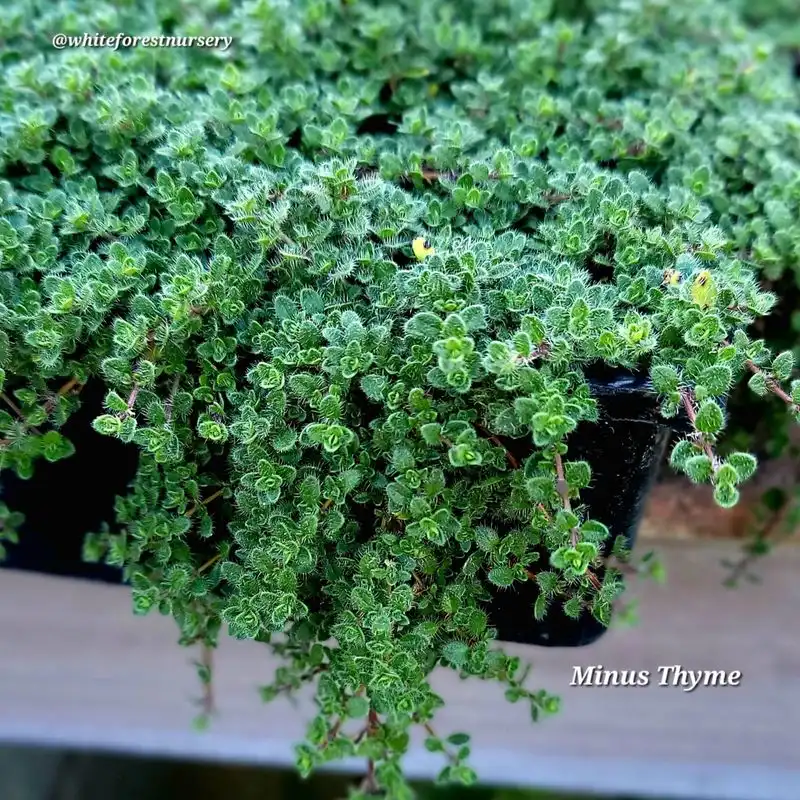
Known for its carpet-like growth and aromatic scent, Creeping Thyme offers more than just aesthetics. Its tiny purple flowers attract bees and butterflies, making it a pollinator’s delight. Hardy and drought-resistant, this plant thrives in sunny spots.
Perfect for garden paths, Creeping Thyme releases a pleasant scent when walked upon. This herb’s low maintenance requirements make it a favorite among busy gardeners, adding both beauty and utility to any border.
Did you know? It’s often used in culinary dishes, adding a hint of lemony flavor. A true multitasker!
Dwarf Mondo Grass

Dwarf Mondo Grass’s deep green hue provides a striking contrast to colorful flowers. Its grass-like leaves grow densely, making it an excellent choice for defining borders.
This evergreen plant is shade-loving and requires minimal care. Resistant to pests and diseases, it remains lush throughout the year, adding texture to your garden.
Used widely in Japanese gardens, Dwarf Mondo Grass offers a zen-like quality, perfect for calm, serene spaces. Its understated elegance makes it a versatile option for various garden designs.
Ajuga Reptans
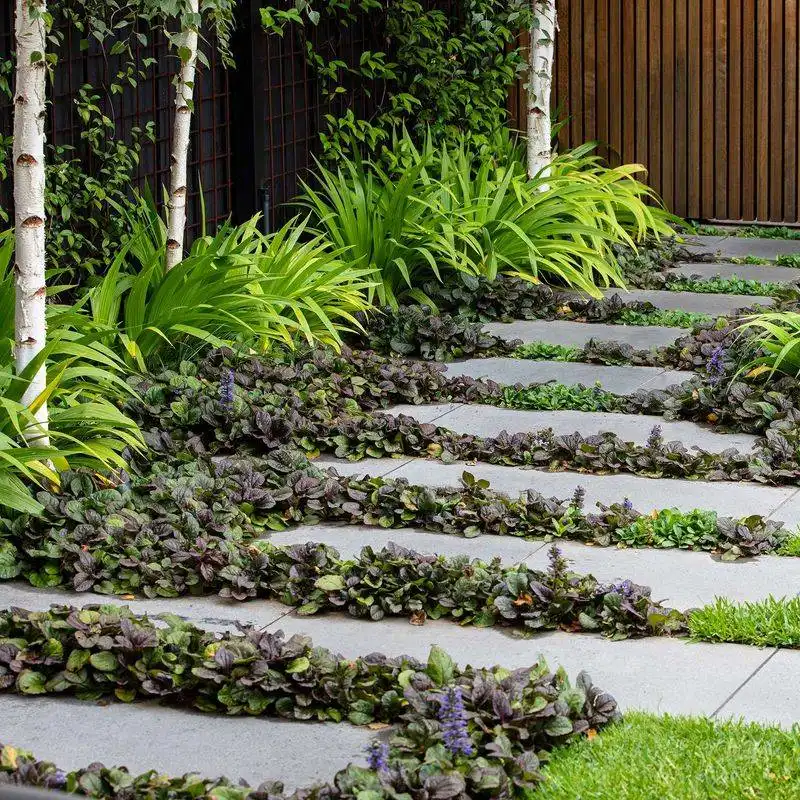
Ajuga Reptans, also known as Bugleweed, is a standout with its glossy leaves and stunning blue flower spikes. Its rapid growth covers ground quickly, providing a lush appearance.
Ideal for shady areas, Ajuga Reptans is adaptable and thrives in various soil types. It’s deer-resistant, adding a layer of protection to your garden’s border.
This plant’s ability to suppress weeds makes it a practical choice for busy gardeners. With seasonal color changes, it offers visual interest year-round, making it a dynamic border option.
Sedum Spurium
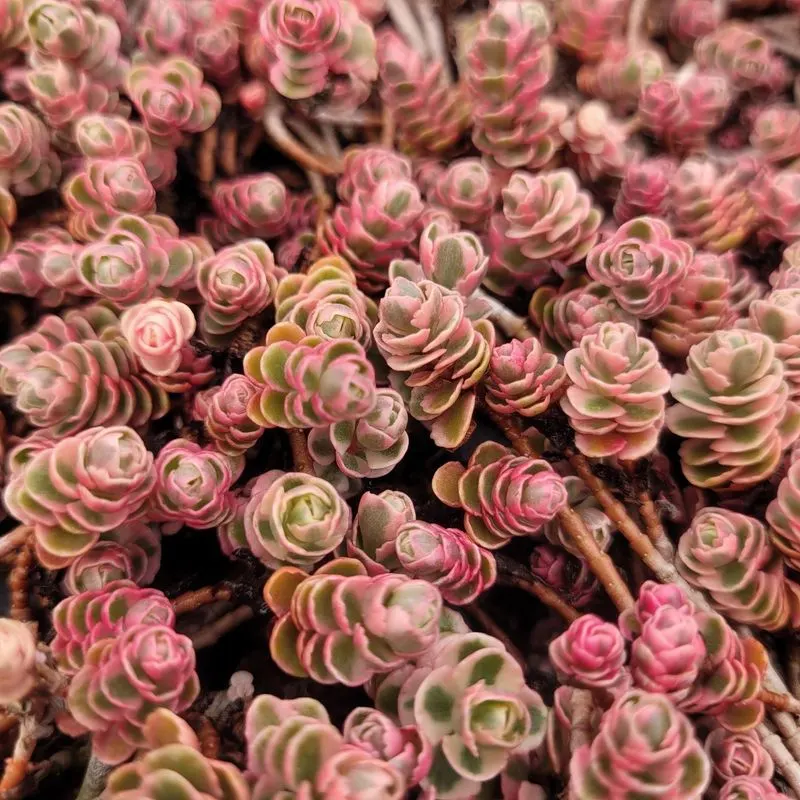
Renowned for its resilience, Sedum Spurium is a succulent that thrives in poor soil conditions. Its fleshy green leaves and pink blossoms add color to any garden border.
This plant is drought-tolerant and requires little maintenance. Perfect for rocky areas, its creeping nature makes it ideal for ground cover.
During autumn, Sedum Spurium’s leaves turn a beautiful red, adding seasonal interest. It’s a favorite among rock garden enthusiasts and offers a unique texture to your landscape.
Sweet Alyssum
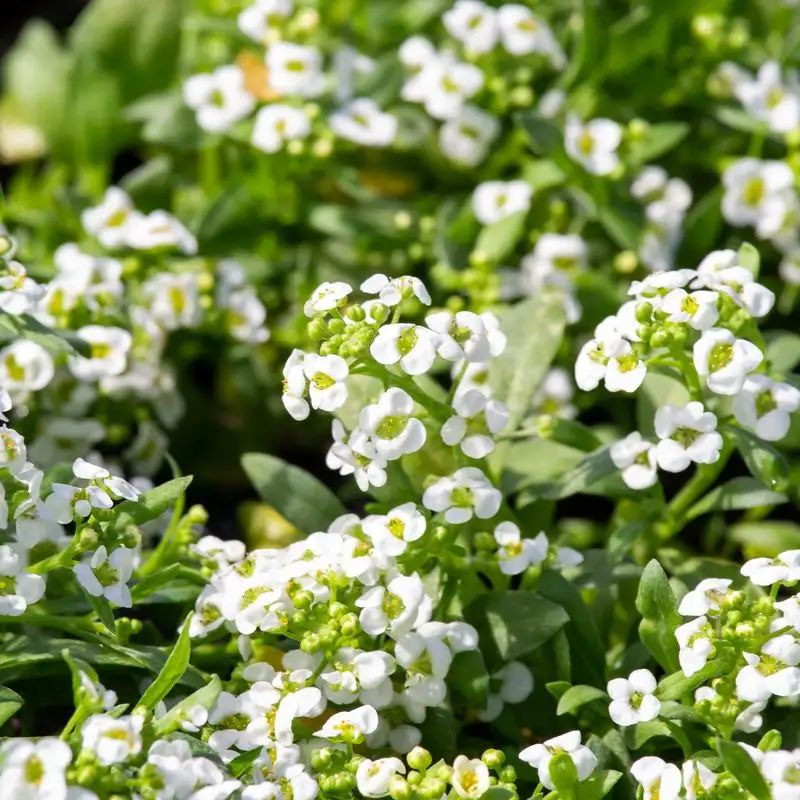
Sweet Alyssum is cherished for its sweet fragrance and tiny white flowers. Its cascading growth habit makes it suitable for borders and garden edges.
Thriving in full sun, this plant attracts beneficial insects like bees and butterflies. It’s easy to grow, making it perfect for novice gardeners.
Sweet Alyssum’s ability to self-seed ensures it returns year after year, providing a continuous display. Its versatility allows it to combine beautifully with other plants, adding charm to any garden.
Liriope
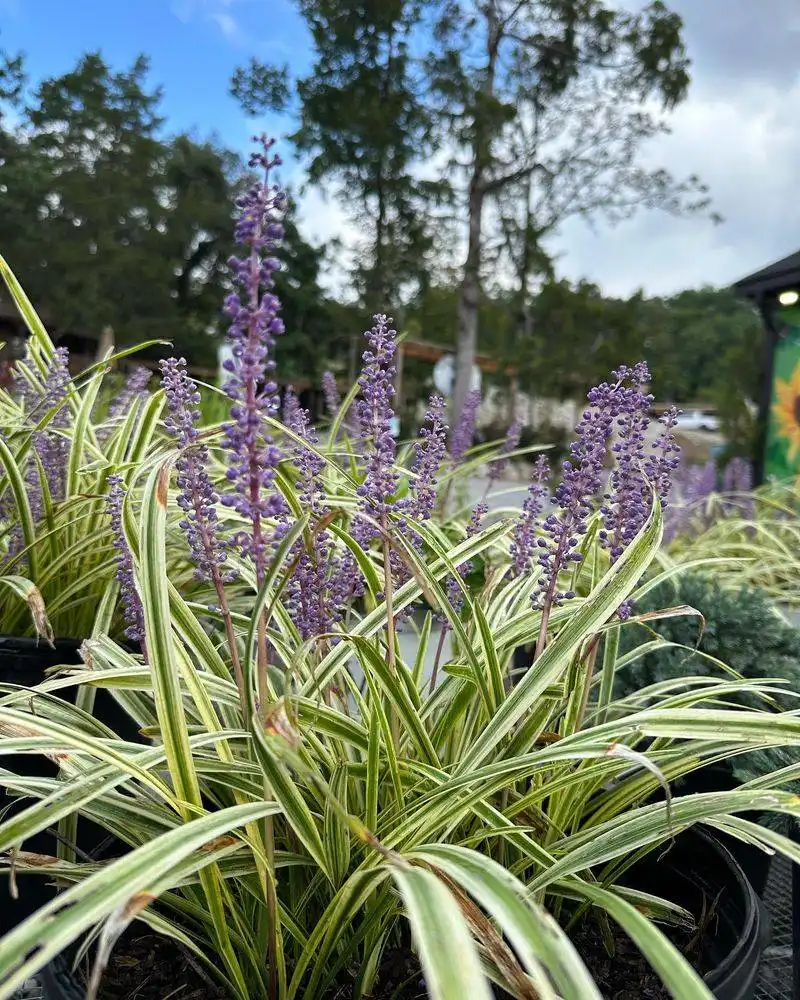
Liriope, often called Lilyturf, brings color with its purple flower spikes. Its grass-like leaves form a dense mat, ideal for defining borders and walkways.
Resilient and easy to grow, Liriope tolerates both sun and shade. Its evergreen nature ensures year-round beauty, while its drought resistance makes it a practical choice.
Commonly used in mass plantings, Liriope provides a lush, uniform look. Its ability to thrive in various conditions makes it a favorite among landscapers.
Mazus Reptans
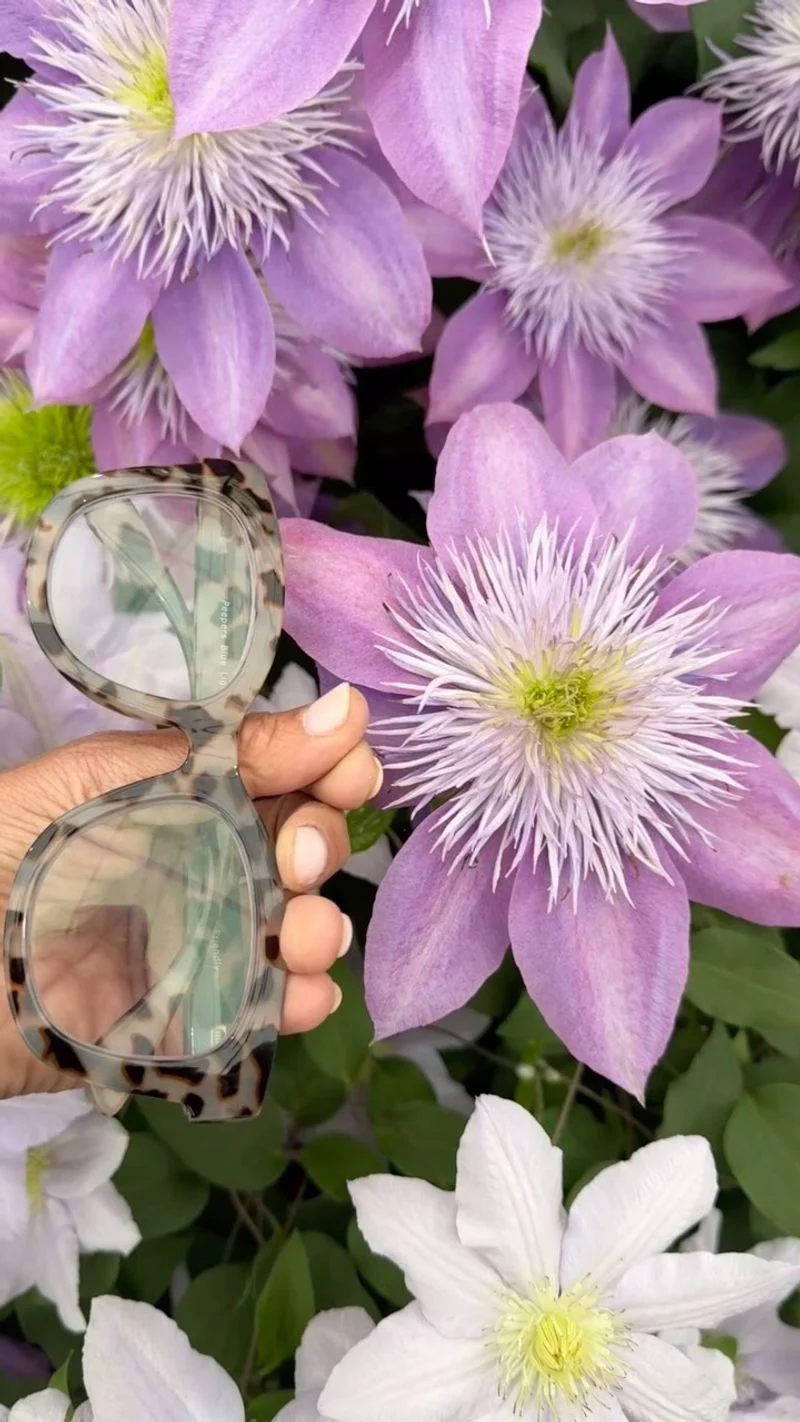
With vibrant violet flowers, Mazus Reptans adds a splash of color to shady areas. Its lush foliage creates an attractive, low-growing carpet.
This plant prefers moist soil and is perfect for areas near water features. It’s known for its quick spreading ability, covering ground efficiently.
Low maintenance and hardy, Mazus Reptans is ideal for filling gaps between pavers. Its long-lasting blooms offer extended visual interest, making it a charming addition to any border.
Heuchera

Heuchera, or Coral Bells, is celebrated for its striking foliage. Leaves come in shades of deep burgundy, bright green, and even silver, offering endless design possibilities.
Requiring minimal care, Heuchera flourishes in shaded gardens. Its small flower spikes add delicate beauty without overpowering its surroundings.
Known for its versatility, this plant complements various garden styles, from modern to cottage. Its colorful foliage provides year-round interest, making it a staple in border design.
Nepeta

Beloved by gardeners and cats alike, Nepeta, or Catmint, enchants with its pale blue flowers and aromatic foliage. It thrives in sunny spots, attracting pollinators like bees and butterflies.
Low-maintenance and drought-tolerant, Nepeta is perfect for hot, dry areas. Its soft, billowy appearance creates a romantic feel, ideal for cottage gardens.
This plant’s long blooming season ensures prolonged color, while its resilience makes it a reliable choice for borders. Its scent adds an extra layer of sensory appeal.
Sagina Subulata
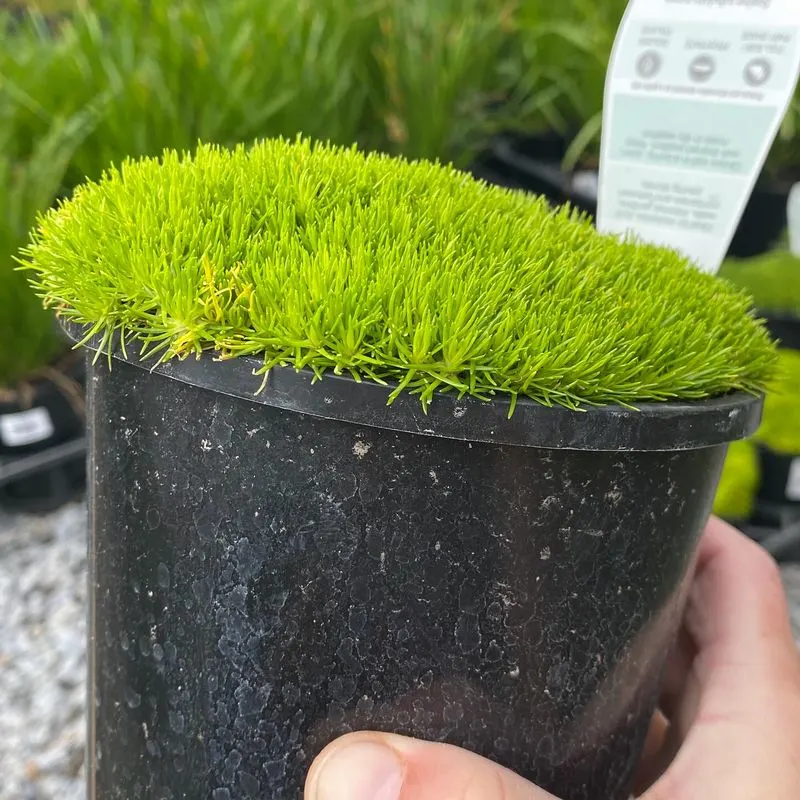
Sagina Subulata, or Irish Moss, captivates with its bright green, moss-like foliage. Its soft texture creates a cozy carpet, perfect for borders and rock gardens.
This plant thrives in cool, moist conditions and is ideal for shaded areas. It’s known for its delicate white flowers that appear in spring, adding a subtle charm.
Irish Moss’s low-growing nature makes it ideal for filling spaces between stepping stones. Its lush appearance remains attractive throughout the seasons, enhancing any garden layout.
Thymus Serpyllum

Thymus Serpyllum, or Wild Thyme, is a fragrant gem with clusters of pink flowers. Its aromatic leaves are a gardener’s delight, adding sensory richness to any border.
Perfect for sunny spots, this plant is drought-tolerant and resilient. Its creeping nature makes it a popular choice for ground cover, requiring minimal upkeep.
Wild Thyme’s ability to attract pollinators adds ecological value. Its enchanting fragrance and colorful blooms create a welcoming atmosphere, making it a cherished addition to gardens.
Phlox Subulata

Phlox Subulata, commonly known as Moss Phlox, paints landscapes with vibrant hues of pink and white. Its dense growth habit forms a striking ground cover that thrives on sunny slopes.
Known for its hardiness, this plant requires little maintenance once established. Its cascading blooms create a visual feast, perfect for rock gardens and borders.
Moss Phlox’s early spring flowers herald the arrival of warmer days, adding a splash of color when most plants are still waking up. It’s a cheerful addition to any garden.
Lysimachia Nummularia
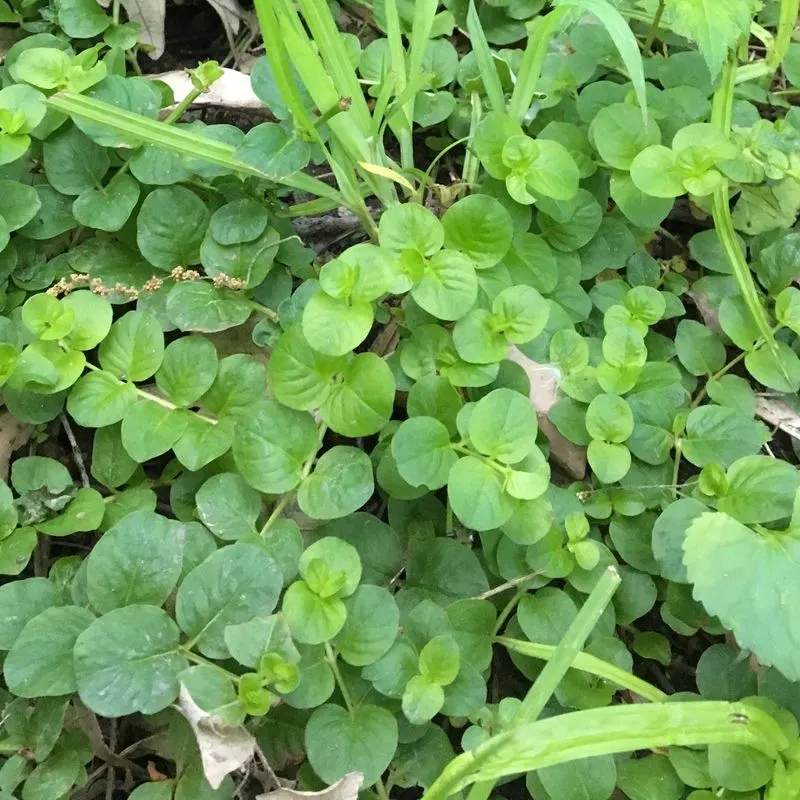
Lysimachia Nummularia, or Creeping Jenny, charms with its trailing stems and golden blossoms. This plant’s cheerful color brightens any garden space.
Thriving in both sun and partial shade, Creeping Jenny spreads quickly, covering ground with ease. Its low-growing nature makes it ideal for hanging baskets and borders.
Known for its adaptability, this plant is perfect for wet areas and even thrives near water features. Its bright hue and vigorous growth make it a standout choice for adding visual interest.
Chamaemelum Nobile
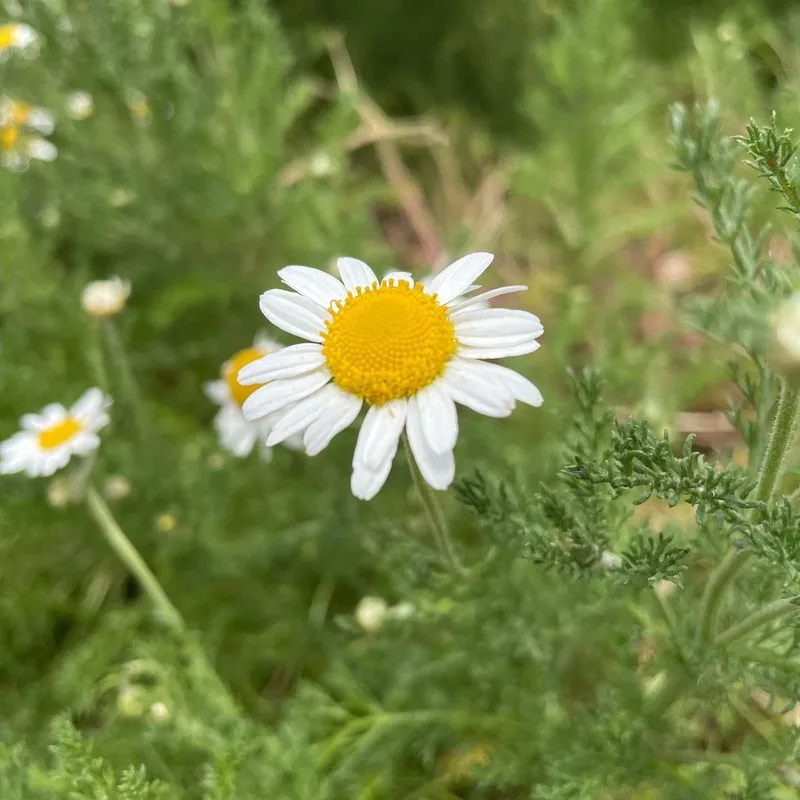
Chamaemelum Nobile, or Roman Chamomile, enchants with its dainty white flowers and feathery foliage. Its sweet fragrance evokes a sense of calm and tranquility.
This plant thrives in sunny spots and requires well-drained soil. Its creeping habit makes it ideal for ground cover, adding a touch of elegance to borders.
Roman Chamomile’s aromatic qualities make it a popular choice for sensory gardens. Its delicate appearance belies its hardiness, offering both beauty and resilience.
Viola Tricolor
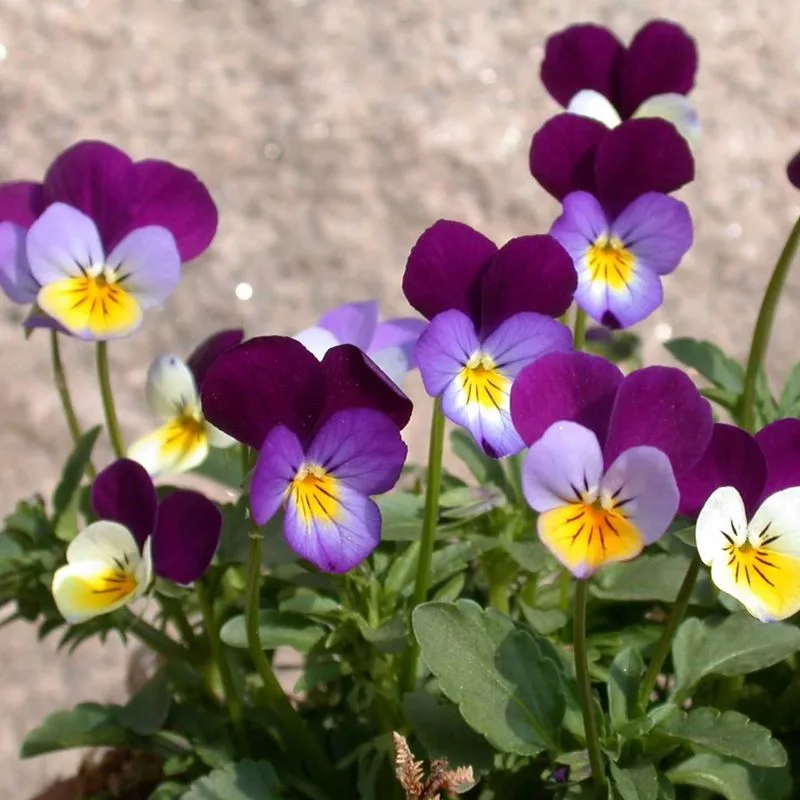
Viola Tricolor, affectionately known as Johnny Jump Up, delights with its cheerful tri-colored blooms. These vibrant flowers add personality to any garden border.
Thriving in cool climates, this plant’s compact growth habit makes it ideal for edging paths. Its self-seeding nature ensures it reappears each spring.
Johnny Jump Up’s edible flowers add a whimsical touch to salads. Its playful blooms bring joy and color, making it a favorite among gardeners looking to add a splash of fun.

